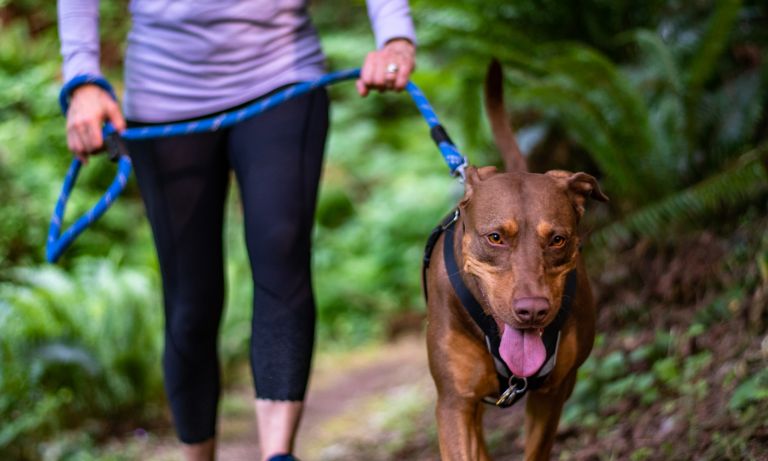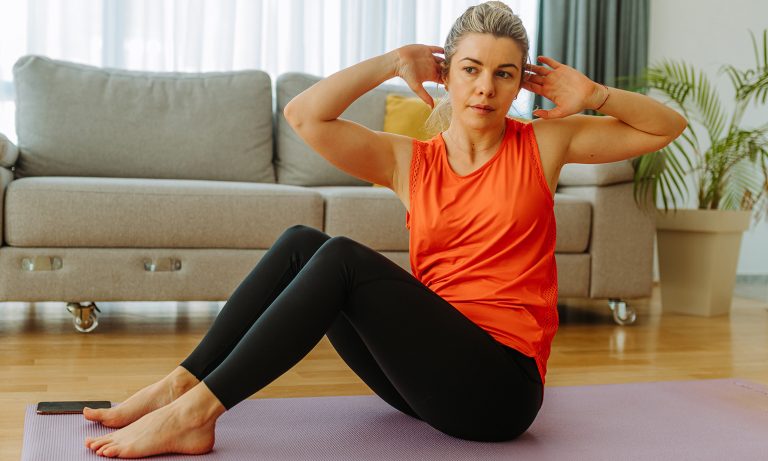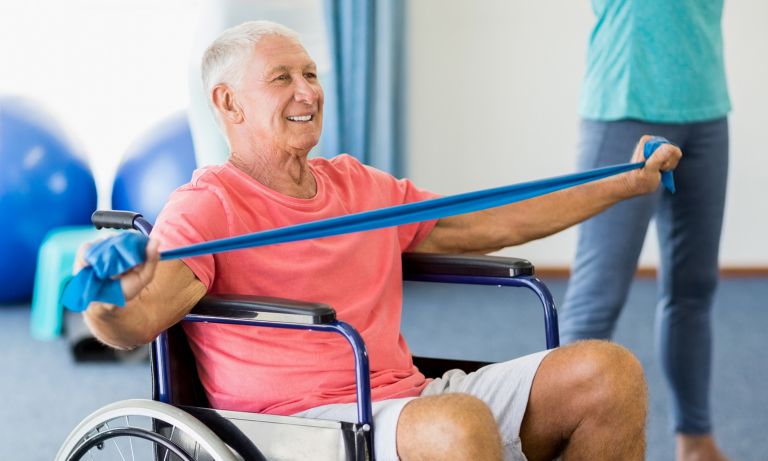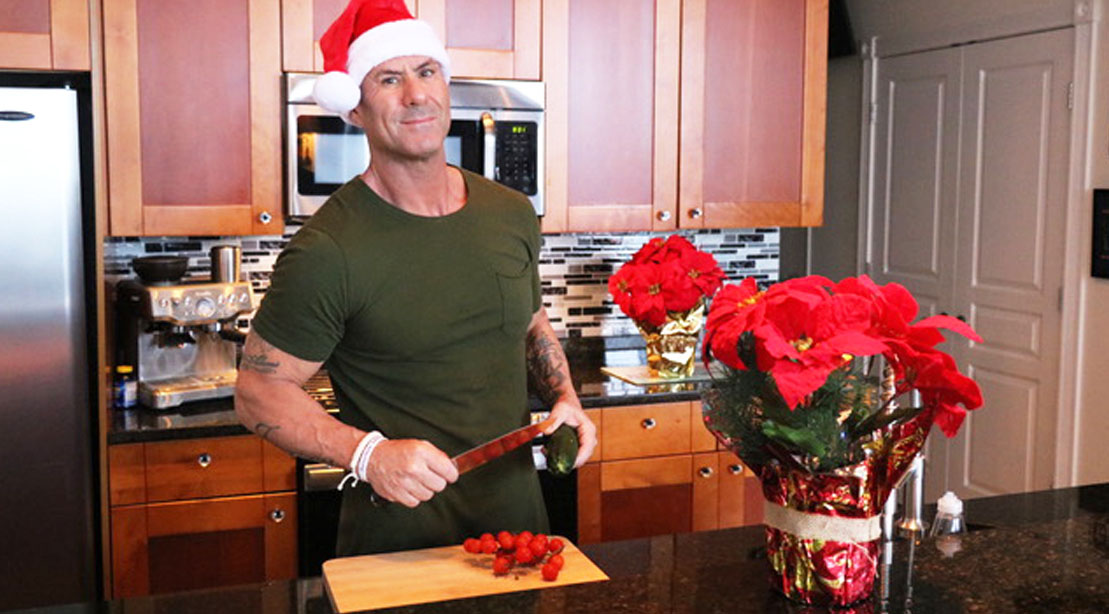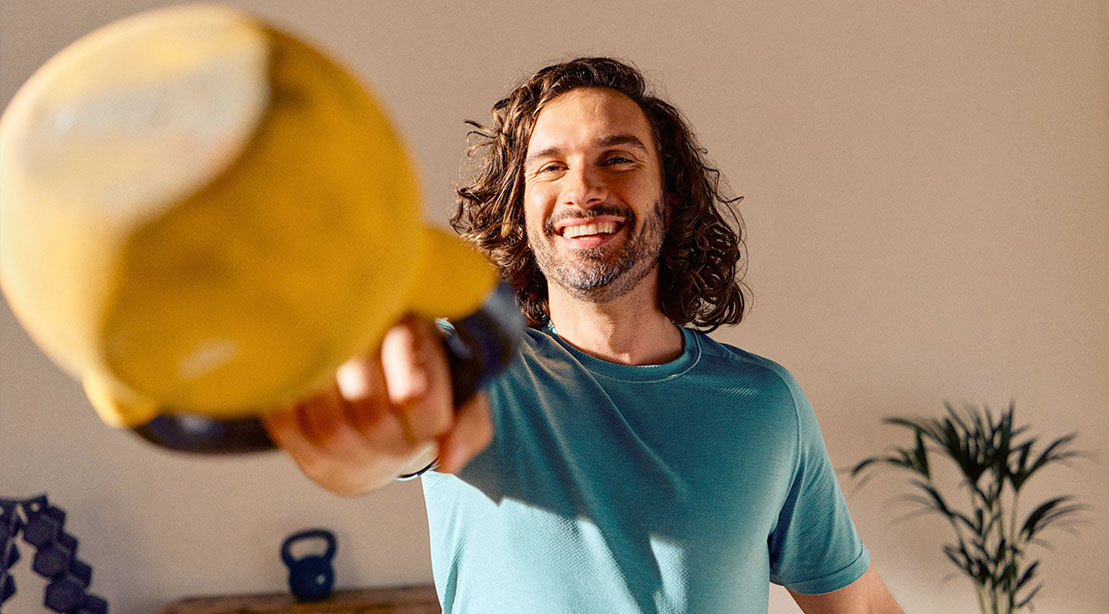A HelpGuide guest article
Home Workout and Fitness Tips: Exercising without the Gym
Whether you’re working at home, traveling, or social distancing, it isn’t always possible to get to the gym. But these tips can help you stay active and healthy whatever your circumstances.
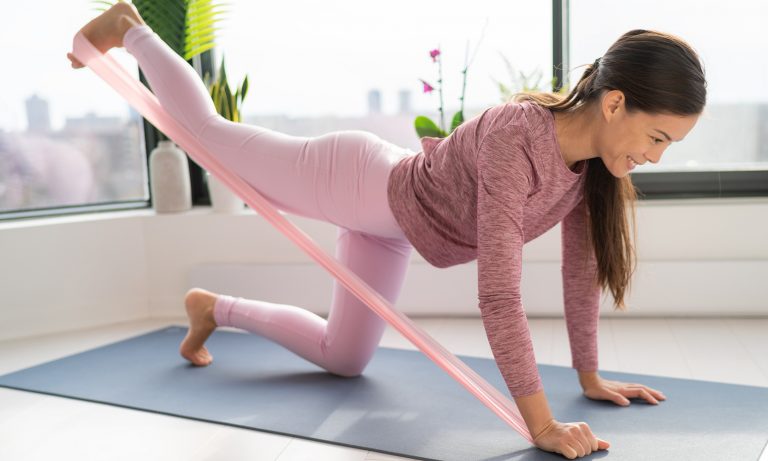

The importance of staying active
When you’re stuck at home, traveling with work, on vacation, or quarantining, it isn’t always easy to stick to an exercise routine or maintain your fitness goals. You may only have limited access to fitness facilities or find it difficult to adjust to a new routine. Perhaps you miss the camaraderie of your gym, the familiarity of swimming laps in your local pool, or the social connection from walking or hiking with your usual group of workout buddies. If you’re used to attending a fitness class with a motivating instructor, you might also be disappointed in the intensity of workouts on your own.
Maintaining an exercise routine at home or in a hotel room can seem more like a ‘should’ than a ‘want to’. And with so many of us out of work and struggling financially at the moment, maintaining a gym membership and staying active can seem like much less of a priority. However, even a small amount of activity can make a huge difference to how well you think and feel. In fact, exercise is one of the most powerful tools we have for staying physically and mentally healthy—and you don’t need access to a gym or expensive health club to reap the rewards.
Exercise can help ease depression, stress, and anxiety, and aid in the management of chronic conditions, such as high blood pressure and diabetes. By finding new ways to get moving and stay motivated, you can take charge of your mood and well-being, retain a sense of control during these days of great uncertainty, and stay on track with your exercise goals even when your normal routine is disrupted.
[Read: The Mental Health Benefits of Exercise]
Exercise and your immune system
While being fit won’t prevent you from catching the virus, it does have many other protective effects. Physical activity releases endorphins, chemicals in your brain that revitalize your mind and body, and it can help to improve all aspects of your health. In addition to boosting your mood and improving sleep, exercise can also strengthen your immune system.
But don’t overdo it. While moderate physical activity supports immune function, too much intense activity—especially if you are not used to it—may have the opposite effect and suppress your immune system.
If you use exercise to keep up your energy and spirits in trying times such as these, you might be less inclined to turn to unhealthy coping mechanisms, such as drinking too much, which can also wear down your immune system.
Making an exercise plan to keep you motivated
Planning is key to developing and maintaining an exercise routine. When making an exercise plan, consider any ongoing health concerns, the time you have available, and your energy and stress levels. Many people report feeling fatigued lately from all the pandemic-related stress, so if you’re still juggling teaching your kids and working at home, or are unemployed and worried about finances, this may not be the time to undertake a challenging new fitness plan.
Whatever your circumstances, set reasonable goals focusing on activities you enjoy. You’re more likely to stick to an exercise plan if you start small, celebrate your successes, and build up gradually.
Prioritize your workouts. People who put their fitness activities on the same calendar as their regular appointments tend to stick to their plan. You wouldn’t cancel your appointment with your dentist because you were busy with work or just didn’t feel like it at that moment. Rather, you’d fulfill your obligation and then return to work afterwards.
Workout at the time that’s right for you. Many people who maintain a long-term exercise program workout in the mornings. Completing your fitness routine in the morning can energize you and set a positive tone for the rest of the day. Others find it helpful to take a break from work and get moving in the afternoon when their energy is flagging. A burst of activity can stimulate the brain and help you push through the rest of the tasks on your to-do list.
Be specific in your goals—and track your workouts. Rather than aim to “get in better shape,” set a concrete goal such as “walk 30 minutes in the morning on Monday/Wednesday/Friday/Saturday.” Try one of the many fitness trackers or smartphone apps available to keep a record of your progress—or simply use a calendar to note the length of your workout, distance, and effort level. Tracking your progress can help keep you accountable, provide a sense of accomplishment, and encourage you to keep going.
Say it out loud. Tell a friend what your goals and routines are or post them on social media. You’re less likely to skip a session if you know your friends will be asking about how you got on. And if they give you positive feedback, it will give you a boost for your next session. Working out with a buddy can also help keep you on track, even when you can’t be physically together. Set up regular times to exercise with each other via a phone or video call—and offer each other support and encouragement.
Affordable Online Therapy
Get professional help from BetterHelp’s network of licensed therapists.
HelpGuide is reader supported. We may receive a commission if you sign up for BetterHelp through the provided link. Learn more.
Need urgent help? Click here.
Tips for getting the activity you need—anywhere
As always, it’s important to be safe, wear good footwear, start slowly, and give your muscles and tendons time to adapt to any new activity. Always seek your physician’s advice if you have any underlying health conditions, take medication for a heart problem or to control blood pressure or blood sugar, or experience dizziness, balance problems, or joint issues. And if you feel pain during an activity, STOP.
Get outside as much as possible. Unless your area is under a stay-at-home order or you need to remain in quarantine, try to exercise outside as much as possible. Take a walk, jog, or ride a bike outside, just remember to wear a mask and/or maintain a safe distance from others. The fresh air and sunshine will provide a further boost to your mental health.
Keep your workouts interesting. Watch your favorite streaming show or listen to a podcast or some great music while working out at home or in a hotel room. While walking, explore a new area in your neighborhood or catch up with a friend on the phone to keep things from getting stale. Or try activity video games or “exergames” that simulate dancing, skateboarding, soccer, bowling, or tennis. These can be great alternatives if you’re unable to participate in the real thing.
Walk in a new way. Immerse yourself in the full experience of walking outdoors by adding a mindfulness element. Notice the smell of the air, the variety of flowers and trees and the feel of the sun or the wind as you move. Bringing your attention to these things can give your conscious mind a break from your worries and unleash your creativity. You might find new ideas and solutions coming to you when you weren’t even aware you were working on them. If you find you need to up the intensity of your walks, look for hills, do some step ups on the curb at each corner, skip, or even jump up and down the curb a few times (if appropriate for your fitness level and joints).
Try something new. Always wanted to try barre exercise, line dancing, cardio funk, or HIIT (high-intensity interval training)? Find a free video online, subscribe to one of the many online classes available, or download an app to guide you through home workouts (see the “Get more help” section below for links). Many people find they are more comfortable trying something new when no one else is watching. You just might find your new passion! Try boxing, Pilates, or yoga. Don’t be intimidated to try something new and refine your online search to be more specific to your needs, like ‘yoga for over 50’, ‘golf-specific exercises’ or ‘basic Pilates for beginners’. There are many new, and often free, classes being posted daily. Just remember to avoid causing pain.
Join the kids. Play catch or tag, go for a bike ride, shoot baskets, or pass the soccer ball with your kids. Taking the focus away from schoolwork or chores and playing together can even help repair a strained relationship.
Miss the gym? Create a home workout area. If you have space available, designate an inviting area of your home to exercise and keep your equipment handy. Try using resistance bands, water bottles, or your own body weight to perform resistance exercises. You could start by doing push-ups against the wall then progress to doing them against the kitchen counter, the coffee table, and finally the floor. Have stairs in your home? Stair climbing is an efficient strength training activity. Keep one foot on a step and step up and down several times (or try stepping up two steps for an even tougher workout).
Find fun group classes online to keep you motivated
It’s so much easier to keep up an exercise routine if you’re part of a group that will help keep you encouraged and accountable. For one online option, check out the Zoom workouts at Leading Lady Fitness.
Build more movement into your day
Many of us are spending more and more time sitting—watching TV, working at the computer, being on Zoom meetings. But even when you’re working at home, you can still find ways to incorporate more movement into your day. Try to think of physical activity as a lifestyle choice rather than as a designated event. Getting up every 30 minutes for a quick bout of activity can add up over the day.
- Intersperse household chores into your sitting time: vacuum a room, scrub a sink, do some yard work, or wipe down your appliances.
- Move around while you are on a call, stand for an online meeting, do squats or lunges while you’re waiting for a meeting to start, or jumping jacks in front of the TV during the credits or commercial breaks.
- Try ‘microwave exercises’ (short bursts of movement) like countertop push-ups while you are waiting for the kettle to boil or toast to pop up.
How much exercise is enough?
When it comes to exercise, something is always better than nothing. Going for a walk around the block will not only stretch your legs but help clear your head as well. It might even inspire you to walk a little further the next day.
[Read: Best Exercises for Health and Weight Loss]
That said, the current recommendation for adults is to aim for at least 150 minutes of moderate intensity activity every week (or 75 minutes of vigorous intensity) with two sessions of strength building activities per week. That’s about 30 minutes of movement, five times per week. It’s also okay to break it up. Two 15-minute workouts or three 10-minute workouts can benefit you just as much. Include warm up and cool down time as part of your workout—as well as heavier activities around the house or garden.
Moderate intensity vs. vigorous intensity
Moderate intensity means that you’re working, breathing faster, and starting to sweat. You’re still able to talk in full sentences, but not able to sing. Examples of moderate intensity activities include: brisk walking, cycling on level ground, hiking, weight training, or skateboarding.
Vigorous intensity means that you’re really working, breathing hard, sweating hard, and too breathless to talk in full sentences. Examples of vigorous intensity activities include: jogging, skipping rope, cycling fast or on hills, aerobics, or circuit training.
Reward yourself
When circumstances make it difficult for you to partake in your favorite forms of exercise, it’s normal to feel a little frustrated. Don’t beat yourself up but keep experimenting with new workouts until you find something that you enjoy. And if you feel your motivation to get moving start to flag, focus on how much better you’ll feel after even a little exercise.
It also helps to give yourself an extra treat as a reward for sticking with a new exercise program. Take a long, hot bubble bath, for example, make a fruit smoothie, or call a friend or family member. And remember: the healthy habits you build now can help you to stay healthier and happier far beyond this global pandemic.


